These pages may not present clearly on some small smartphone screens; please use a normal large screen on a desktop, laptop, or tablet in landscape mode. Thankyou.
© Robin Lovelock.

To see use of the translation flags, and translated subtitles on Youtube videos,
Play Video Here
. Videos only play from English pages.















Home .
GPS .
Download .
Business .
Partners .
Contact .
Family .
AVL .
Links .
History .
AsOnTV .
Holidays .
Telescope .
Snoopy .
Grumpy .
NHSCare.info .
AMRA .
Jack
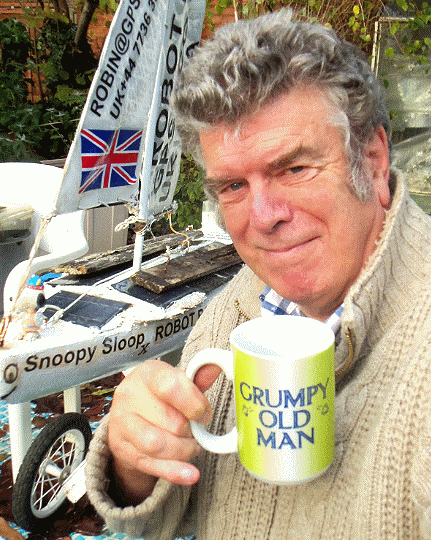
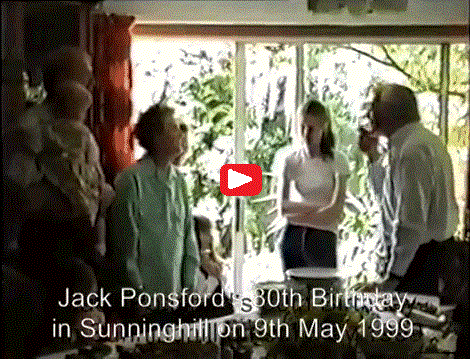
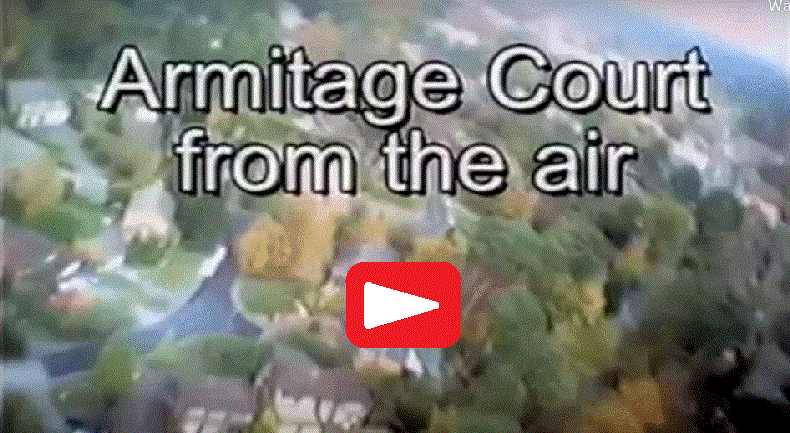 From Robin Lovelock:
For News from the Lovelock family in Sunninghill, such as Christmas Newsletters,
See the
Family
page.
On the right is an old video of June's dad
Jack Ponsford
. The Ponsfords came to Sunninghill when the railway was built ! :-)
From Robin Lovelock:
For News from the Lovelock family in Sunninghill, such as Christmas Newsletters,
See the
Family
page.
On the right is an old video of June's dad
Jack Ponsford
. The Ponsfords came to Sunninghill when the railway was built ! :-)
You may enjoy
Snoopy filming Armitage Court from the Air
.
My other videos include
Grumpy Old Men with Rockets
,
Red Kites from the Air
,
and
Puppy Dog made by Robin that wees
:-)

See the
Sunninghill Wheelbarrow Races
and
AMRA pages,
or just click on the pictures below.
Love and Strength to all who suffer in the World.



from February 2000 ... Sunninghill Village - Old and New
for ancient history of Sunninghill in Berkshire, please click
here.
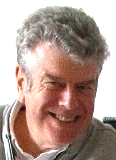 Well .. You asked for it .. Here is yet another page of family pictures,
but this time with a bit more about Sunninghill. Originally requested by the
Dentons, now living in Florida USA - who lived for
a while at 32 Lower Village Road in Sunninghill.
Well .. You asked for it .. Here is yet another page of family pictures,
but this time with a bit more about Sunninghill. Originally requested by the
Dentons, now living in Florida USA - who lived for
a while at 32 Lower Village Road in Sunninghill.
 As it happens they
lived a few yards from June's Grandma Ponsford,
who lived at number 17.
June's Dad, Jack Ponsford, seen on
the right, at his 80th Birthday Party,
often pops round to thrash Robin at
Snooker, and much of this "local knowledge" below comes from him.
Grandma Ponsford shared the house
with a Polish lodger, Jan. The Ponsford family connection to the
village go back to about 1870, when June's great-grandfather arrived
in Sunninghill. He was a 'Navigator' as they called them then - now
we call them 'Navis' or labourers - who came up from the west country
with the men helping to build the railway. When you look at the deep
railway cutting through Sunninghill, you realise there was one heck
of a lot of work digging that out by hand.
He met a local girl and decided
to stay. St Michaels School, left, in the centre of Sunninghill, was
where generations of Ponsfords, and then Lovelock's
(Samantha, Saskia and Michelle) went to school.
As it happens they
lived a few yards from June's Grandma Ponsford,
who lived at number 17.
June's Dad, Jack Ponsford, seen on
the right, at his 80th Birthday Party,
often pops round to thrash Robin at
Snooker, and much of this "local knowledge" below comes from him.
Grandma Ponsford shared the house
with a Polish lodger, Jan. The Ponsford family connection to the
village go back to about 1870, when June's great-grandfather arrived
in Sunninghill. He was a 'Navigator' as they called them then - now
we call them 'Navis' or labourers - who came up from the west country
with the men helping to build the railway. When you look at the deep
railway cutting through Sunninghill, you realise there was one heck
of a lot of work digging that out by hand.
He met a local girl and decided
to stay. St Michaels School, left, in the centre of Sunninghill, was
where generations of Ponsfords, and then Lovelock's
(Samantha, Saskia and Michelle) went to school.
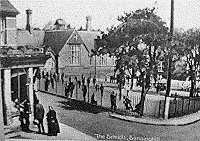
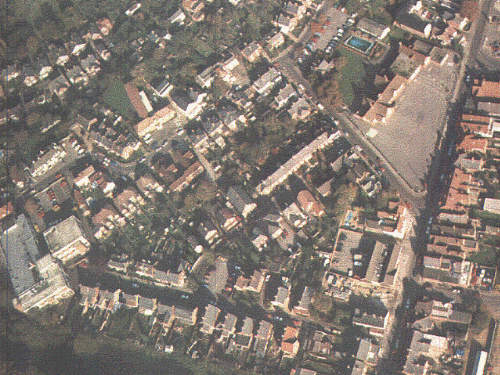 St Michaels School has not changed
much since 1900, as you can see from the picture on the right taken from
the air.
The School playground is on the right, with Sunninghill High Street running from
top to bottom.
You may be able to just make out a red blob in the low corner
of the playground which is the telephone box. The white square on the playground
near the School building is in fact a chess board !
In the top left corner of the picture,
you can just see a few houses of Lower Village Road - possibly including number 32 !
The large building on the low left is the British Telecom Telephone Exchange
- where June's Mum worked for many years as a telephone operator.
St Michaels School has not changed
much since 1900, as you can see from the picture on the right taken from
the air.
The School playground is on the right, with Sunninghill High Street running from
top to bottom.
You may be able to just make out a red blob in the low corner
of the playground which is the telephone box. The white square on the playground
near the School building is in fact a chess board !
In the top left corner of the picture,
you can just see a few houses of Lower Village Road - possibly including number 32 !
The large building on the low left is the British Telecom Telephone Exchange
- where June's Mum worked for many years as a telephone operator.
 When June's Dad went to St Michael's School in the 1920's he remembers the playground as not being surfaced,
and there being one or two pine trees.
There was also a large gun, left there for the
boys to play with, from the 1914-18 War. It was eventually taken away - probably
boys fell off it too many times. The school boys were always disappointed that
they were never allowed live ammunition.
When June's Dad went to St Michael's School in the 1920's he remembers the playground as not being surfaced,
and there being one or two pine trees.
There was also a large gun, left there for the
boys to play with, from the 1914-18 War. It was eventually taken away - probably
boys fell off it too many times. The school boys were always disappointed that
they were never allowed live ammunition.
The picture on the left was taken
in about 1931. June's Dad, Jack Ponsford, is the little chap leaning over
to the left of the guy in the middle holding the paper. Jack's cousin,
Albert Ponsford,
is left of Jack on the end of the row.
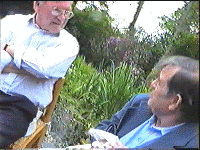 The lad
on the extreme right is Harry Trip - who recently attended Jack's 80th
Birthday party at our place - see pictures on either side.
The lad
on the extreme right is Harry Trip - who recently attended Jack's 80th
Birthday party at our place - see pictures on either side.
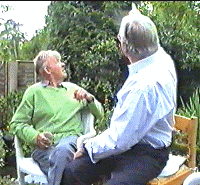 Robin recently found this old classroom picture
in an excellent book called "Around Ascot" by Reg Morris. ISBN 0 7524 1573 5.
This is crammed with local information and old photographs. Locals can buy it
in Sunninghill Post Office for £9.99. Robin and June recently treated
themselves to some framed pictures of Sunninghill, like that at the top,
for only £15 from the combined hairdressers and gift shop in Sunningdale, on the A30,
on the left, after the railway crossing, going towards London.
Robin recently found this old classroom picture
in an excellent book called "Around Ascot" by Reg Morris. ISBN 0 7524 1573 5.
This is crammed with local information and old photographs. Locals can buy it
in Sunninghill Post Office for £9.99. Robin and June recently treated
themselves to some framed pictures of Sunninghill, like that at the top,
for only £15 from the combined hairdressers and gift shop in Sunningdale, on the A30,
on the left, after the railway crossing, going towards London.
You're probably asking how was the aerial photo taken. The answer is from a radio-controlled
model aircraft. Most of these pictures were taken more than ten years ago - as you can see from
the age of Saskia, here with my camera-carrying Ben Buckle Super 60.
It was built
with a large space able to take a 35mm camera, either pointing straight down, or
sideways for the panaramic shots. One of the transmitter sticks was used to operate
the shutter - so a whole film could be shot on one flight (more later
for those interested).
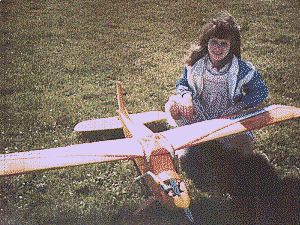

The picture on the right is Charter's School, half a mile south of the village.
This is the local school most children go to after St Michaels, which is a
Primary School for up to the age of 11.
The Playing Field was my local airfield - having got permission to
make the occasional flight from the Head Master. You can just see me as
a white blob at the bottom of the picture. A friend standing nearer the village
used a CB to act as a 'Forward Air Controller' to talk me over, and tell me
when to start pressing the shutter.
A year or two later I had progressed to electric glider flying. I found that
even the smallest, cheapest glider - with a good electric motor - could
haul up my camera several hundred feet - and a bit higher if there were
thermals about ! This meant that I could fly from closer to the village
- due to the fact that I did not have a noisey motor. The picture below
is from the other flying site - used once - the recreational area north
of the village known as 'The Victory Field'.
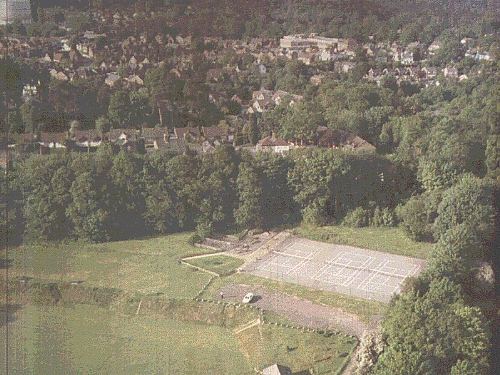
This picture from over The Victory Field is looking south towards the village.
You can see the Tennis Courts and my white car. It was taken early one Saturday
morning, while it was still quiet. You can just see me a few yards to the left of the car.
Take-offs and landings were a bit 'hairy', since they had to be a tight spiral in the
centre of the field to avoid the trees all round. I remember it was a bit windy - so
turbulence made it particularly challenging !
The Victory Field got it's name (so June Dad tells me) from the fact that it
was built just after the 1914-18 War. I say 'built' because it was a major earth-moving exercise. A local landowner with a bit of cash decided to be charitable and spread some of it around - since there was little work around in that big recession between the two World Wars. Scores of local men used spades and
wheel-barrows to transform a sloping field into one suitable for playing football on
- a level playing field - and also provide a steep bank as a natural grandstand.
You can see the bank quite clearly. The car is parked at the top of it.
The next picture is from over the
trees at the edge of the field, so you get a better view of the village.
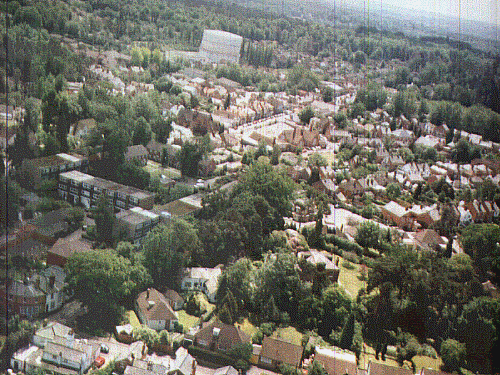
The Gasworks - an ugly local landmark but it's been there so long we would
probably regret it going - can be seen in the centre of the picture. St Michaels
school and a strip of the High Street is below and to the right. Some of Lower Village
Road is also visible - or at least the rooves of some of the houses !
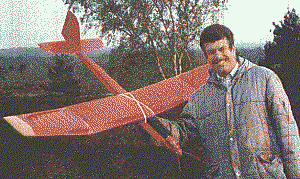
Here's me with my electric powered glider, not so many years ago. I used to get
an hour in most weekends - June would say several hours - but now I rarely get
the time - but I do take one or two when we take a break in the summer. I do
the 'serious' flying on Chobham Common - just south of Sunningdale - where this
picture was taken. Chobham Common is the nearest the locals of Sunninghill get
to a bit of wilderness. Its only a few miles across, but is not a bad mixture of
forest and areas of heather broken by dusty trails.
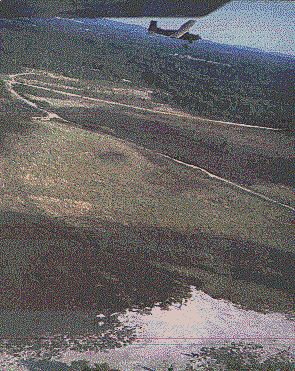
Here is one of my favourite snaps over the Common: taken flying at about 500
feet, with the camera looking sideways out of the fusulage under the wing.
You can see the wing at the top of the picture, together with the other model
flying in formation. I think that's my shadow, and my head at the bottom of
the picture - but if you can make anything of it - you have better image processing
than me !
These pictures of Chobham Common remind me of one of the most interesting local
stories I've heard : That of the Chobham Treacle Mines - I know, you'll be saying
here he goes with another one of his 'wind up' stories - but actually it's completely
true - and as you'll hear, has a perfectly rational explanation.
I believe it was in the 1930's that a local person discovered a spot on the Common
where there was large quantities of treacle welling to the surface. Within a few days,
scores of them were coming to dig deep pits, into which the treacle oozed, and
could be scooped up by the bucket-full. I don't know what they did with it when
they got home, but I suppose it could have been strained through cloth then boiled
to make toffee or something. For years people spoke with awe, and in hushed
whispers about the Chobham Treacle Mines.
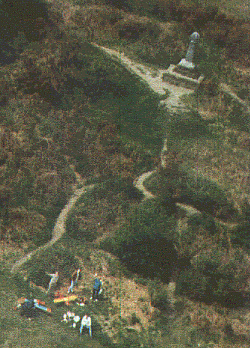
Alas, as with many such stories, a rational explanation eventually surfaces. In this
case it surfaced when some of the enthusiastic locals dug their pits deeper and
struck something - well several somethings - in fact hundreds of giant wooden
barrels of mollasis. These had been there for some years, and the wood had started
to fall appart and let the contents ooze out. So who put the barrels there in the
first place ? The clue is in the picture on the left (that's me at the bottom controlling
the aircraft !). The monument in the background is on a small hill overlooking the
Common. It was erected near the turn of Century to commemorate Queen Victoria
reviewing the troops going off to fight the Dutch in South Africa during the Boar
War. Tens of thousands of infantry and cavalry were transported in by railway
(which runs through the Common) - and the thousands of horses had to be fed.
The barrels of mollases were used to 'spice up' the horses feed, but at the end
many were surplus to requirements - so they were buried !
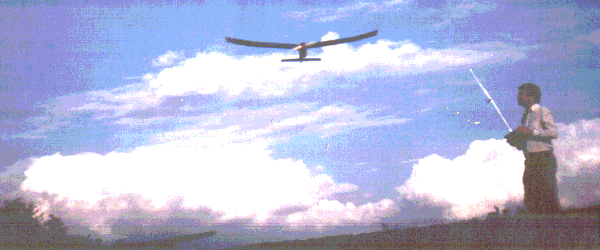 I hope you enjoyed these few snippets of local knowledge.
Some of this material was put up nearly 3 years ago.
Not sure if it will be another 3 years before I update it again :-)
I hope you enjoyed these few snippets of local knowledge.
Some of this material was put up nearly 3 years ago.
Not sure if it will be another 3 years before I update it again :-)
I'll leave you with this picture of me enjoying myself.
Bye for now from Robin Lovelock. February 2000.
© 1991-2016 Robin Lovelock, Sunninghill Systems.
22 Armitage Court, Sunninghill, Ascot, Berks SL5 9TA, United Kingdom.
 visits to this page since 5th January 2016, counted by
www.digits.net
visits to this page since 5th January 2016, counted by
www.digits.net







 Well .. You asked for it .. Here is yet another page of family pictures,
but this time with a bit more about Sunninghill. Originally requested by the
Dentons, now living in Florida USA - who lived for
a while at 32 Lower Village Road in Sunninghill.
Well .. You asked for it .. Here is yet another page of family pictures,
but this time with a bit more about Sunninghill. Originally requested by the
Dentons, now living in Florida USA - who lived for
a while at 32 Lower Village Road in Sunninghill.
 As it happens they
lived a few yards from June's Grandma Ponsford,
who lived at number 17.
June's Dad, Jack Ponsford, seen on
the right, at his 80th Birthday Party,
often pops round to thrash Robin at
Snooker, and much of this "local knowledge" below comes from him.
Grandma Ponsford shared the house
with a Polish lodger, Jan. The Ponsford family connection to the
village go back to about 1870, when June's great-grandfather arrived
in Sunninghill. He was a 'Navigator' as they called them then - now
we call them 'Navis' or labourers - who came up from the west country
with the men helping to build the railway. When you look at the deep
railway cutting through Sunninghill, you realise there was one heck
of a lot of work digging that out by hand.
He met a local girl and decided
to stay. St Michaels School, left, in the centre of Sunninghill, was
where generations of Ponsfords, and then Lovelock's
(Samantha, Saskia and Michelle) went to school.
As it happens they
lived a few yards from June's Grandma Ponsford,
who lived at number 17.
June's Dad, Jack Ponsford, seen on
the right, at his 80th Birthday Party,
often pops round to thrash Robin at
Snooker, and much of this "local knowledge" below comes from him.
Grandma Ponsford shared the house
with a Polish lodger, Jan. The Ponsford family connection to the
village go back to about 1870, when June's great-grandfather arrived
in Sunninghill. He was a 'Navigator' as they called them then - now
we call them 'Navis' or labourers - who came up from the west country
with the men helping to build the railway. When you look at the deep
railway cutting through Sunninghill, you realise there was one heck
of a lot of work digging that out by hand.
He met a local girl and decided
to stay. St Michaels School, left, in the centre of Sunninghill, was
where generations of Ponsfords, and then Lovelock's
(Samantha, Saskia and Michelle) went to school.

 St Michaels School has not changed
much since 1900, as you can see from the picture on the right taken from
the air.
The School playground is on the right, with Sunninghill High Street running from
top to bottom.
You may be able to just make out a red blob in the low corner
of the playground which is the telephone box. The white square on the playground
near the School building is in fact a chess board !
In the top left corner of the picture,
you can just see a few houses of Lower Village Road - possibly including number 32 !
The large building on the low left is the British Telecom Telephone Exchange
- where June's Mum worked for many years as a telephone operator.
St Michaels School has not changed
much since 1900, as you can see from the picture on the right taken from
the air.
The School playground is on the right, with Sunninghill High Street running from
top to bottom.
You may be able to just make out a red blob in the low corner
of the playground which is the telephone box. The white square on the playground
near the School building is in fact a chess board !
In the top left corner of the picture,
you can just see a few houses of Lower Village Road - possibly including number 32 !
The large building on the low left is the British Telecom Telephone Exchange
- where June's Mum worked for many years as a telephone operator.
 When June's Dad went to St Michael's School in the 1920's he remembers the playground as not being surfaced,
and there being one or two pine trees.
There was also a large gun, left there for the
boys to play with, from the 1914-18 War. It was eventually taken away - probably
boys fell off it too many times. The school boys were always disappointed that
they were never allowed live ammunition.
When June's Dad went to St Michael's School in the 1920's he remembers the playground as not being surfaced,
and there being one or two pine trees.
There was also a large gun, left there for the
boys to play with, from the 1914-18 War. It was eventually taken away - probably
boys fell off it too many times. The school boys were always disappointed that
they were never allowed live ammunition.
 The lad
on the extreme right is Harry Trip - who recently attended Jack's 80th
Birthday party at our place - see pictures on either side.
The lad
on the extreme right is Harry Trip - who recently attended Jack's 80th
Birthday party at our place - see pictures on either side.
 Robin recently found this old classroom picture
in an excellent book called "Around Ascot" by Reg Morris. ISBN 0 7524 1573 5.
This is crammed with local information and old photographs. Locals can buy it
in Sunninghill Post Office for £9.99. Robin and June recently treated
themselves to some framed pictures of Sunninghill, like that at the top,
for only £15 from the combined hairdressers and gift shop in Sunningdale, on the A30,
on the left, after the railway crossing, going towards London.
Robin recently found this old classroom picture
in an excellent book called "Around Ascot" by Reg Morris. ISBN 0 7524 1573 5.
This is crammed with local information and old photographs. Locals can buy it
in Sunninghill Post Office for £9.99. Robin and June recently treated
themselves to some framed pictures of Sunninghill, like that at the top,
for only £15 from the combined hairdressers and gift shop in Sunningdale, on the A30,
on the left, after the railway crossing, going towards London.







 I hope you enjoyed these few snippets of local knowledge.
Some of this material was put up nearly 3 years ago.
Not sure if it will be another 3 years before I update it again :-)
I hope you enjoyed these few snippets of local knowledge.
Some of this material was put up nearly 3 years ago.
Not sure if it will be another 3 years before I update it again :-)